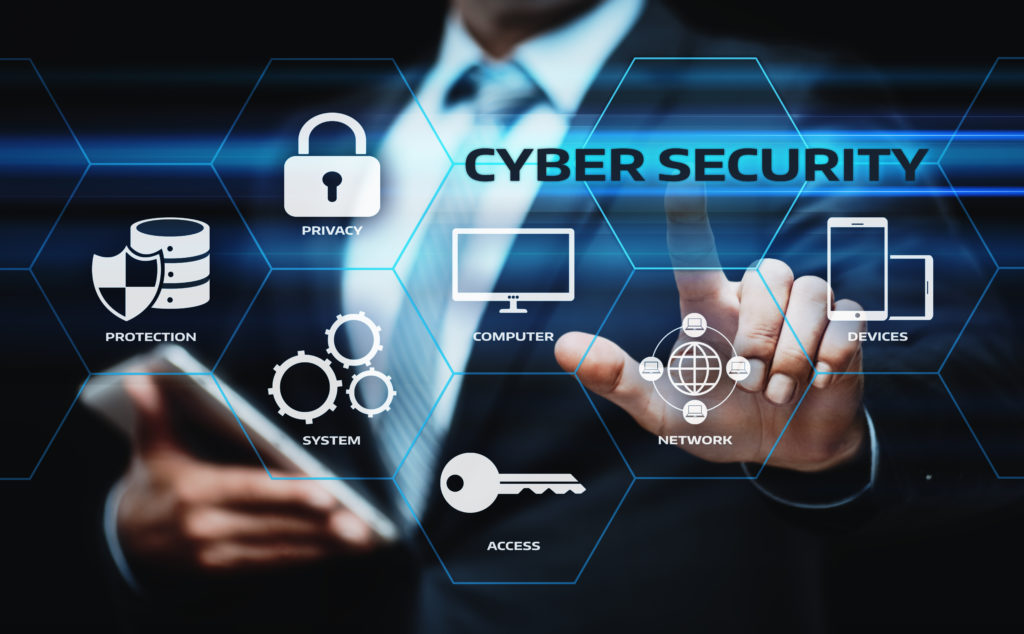How Data Cyber Security Protects Your Organization from Emerging Threats
How Data Cyber Security Protects Your Organization from Emerging Threats
Blog Article
How Information and Network Protection Shields Versus Arising Cyber Risks
In an age noted by the rapid development of cyber threats, the relevance of data and network protection has actually never ever been a lot more pronounced. As these threats become more complicated, recognizing the interplay in between data safety and security and network defenses is necessary for alleviating risks.
Comprehending Cyber Threats

The ever-evolving nature of innovation constantly presents brand-new vulnerabilities, making it critical for stakeholders to stay attentive. People might unknowingly succumb to social engineering techniques, where attackers control them right into disclosing sensitive information. Organizations face unique obstacles, as cybercriminals frequently target them to make use of important information or disrupt operations.
Moreover, the rise of the Web of Points (IoT) has actually expanded the attack surface area, as interconnected devices can work as entrance factors for assailants. Identifying the importance of robust cybersecurity methods is essential for alleviating these dangers. By fostering a thorough understanding of cyber individuals, companies and dangers can execute reliable techniques to guard their electronic properties, guaranteeing resilience in the face of an increasingly complex threat landscape.
Secret Components of Data Safety
Making sure data security calls for a diverse method that incorporates various crucial elements. One essential element is information security, which changes sensitive details right into an unreadable layout, accessible just to accredited users with the suitable decryption keys. This functions as a vital line of protection against unauthorized accessibility.
An additional crucial component is gain access to control, which manages who can check out or adjust data. By applying strict user verification methods and role-based accessibility controls, companies can lessen the risk of expert hazards and information breaches.

In addition, data masking strategies can be used to protect delicate details while still permitting its use in non-production environments, such as screening and advancement. fft perimeter intrusion solutions.
Network Protection Approaches
Executing durable network protection approaches is essential for securing an organization's digital framework. These approaches involve a multi-layered strategy that consists of both equipment and software application options designed to safeguard the integrity, confidentiality, and schedule of data.
One vital element of network safety is the deployment of firewall programs, which function as an obstacle between trusted inner networks and untrusted exterior networks. Firewall programs can be hardware-based, software-based, or a mix of both, and they assist filter incoming and outgoing traffic based on predefined safety policies.
Furthermore, breach discovery and prevention systems (IDPS) play a crucial role in checking network web traffic for suspicious tasks. These systems can alert managers to prospective breaches and do something about it to mitigate threats in real-time. Consistently updating and patching software is also vital, as vulnerabilities can be manipulated by cybercriminals.
In addition, implementing Virtual Private Networks (VPNs) ensures safe and secure remote access, encrypting information sent over public networks. Segmenting networks can lower the strike surface area and consist of potential breaches, restricting their effect on the general infrastructure. By adopting these approaches, organizations can efficiently strengthen their networks against emerging cyber dangers.
Finest Practices for Organizations
Developing best practices for organizations is essential in keeping a solid protection stance. An extensive strategy to information and network security begins with routine risk assessments to identify susceptabilities and possible risks.
In addition, constant staff member training and awareness programs are vital. Employees ought to be educated on identifying phishing efforts, social design techniques, and the value of adhering to security methods. Normal updates and patch administration for software and systems are additionally vital to secure versus understood vulnerabilities.
Organizations have to check and develop event action prepares to make sure preparedness for prospective violations. This includes developing clear interaction channels and functions throughout a security incident. In addition, data encryption must be employed both at remainder and en route to guard sensitive info.
Last but not least, conducting regular audits and compliance checks will certainly aid make sure adherence to relevant guidelines and well-known plans - fft perimeter intrusion solutions. By following these finest methods, companies can substantially enhance their strength against emerging cyber threats and safeguard their crucial possessions
Future Trends in Cybersecurity
As organizations browse a progressively complicated digital landscape, the future of cybersecurity is poised to evolve considerably, driven by changing and arising technologies danger standards. One noticeable trend is the assimilation of expert system (AI) and machine discovering (ML) into security frameworks, permitting real-time danger detection and reaction automation. These innovations can assess large amounts of data to recognize abnormalities and prospective breaches more efficiently check out this site than conventional methods.
One more important pattern is the rise of zero-trust architecture, which calls for constant verification of customer identities and gadget security, no matter their location. This technique reduces the risk of insider dangers and improves security versus external strikes.
In addition, the boosting adoption of cloud services demands robust cloud protection strategies that address unique susceptabilities related to cloud environments. As remote job becomes an irreversible component, securing go to my site endpoints will certainly likewise end up being extremely important, leading to an elevated concentrate on endpoint discovery and action (EDR) services.
Lastly, regulatory conformity will continue to form cybersecurity practices, pressing organizations to adopt extra rigid information security steps. Welcoming these trends will certainly be necessary for organizations to fortify their defenses and navigate the progressing landscape of cyber threats properly.
Conclusion
Finally, the implementation of robust information and network security measures is important for organizations to guard against emerging cyber risks. By using security, accessibility control, and efficient network protection approaches, organizations can considerably lower susceptabilities and safeguard delicate information. Taking on finest techniques additionally boosts resilience, preparing organizations to deal with developing cyber obstacles. As cybersecurity remains to progress, staying informed concerning future trends will certainly be vital in keeping a solid protection versus prospective threats.
In a period marked by the fast advancement of cyber my blog threats, the relevance of information and network protection has never ever been extra pronounced. As these risks become much more intricate, recognizing the interaction between data protection and network defenses is crucial for minimizing dangers. Cyber hazards incorporate a large variety of destructive activities aimed at endangering the privacy, integrity, and availability of information and networks. A thorough strategy to information and network safety and security begins with normal risk analyses to recognize vulnerabilities and potential dangers.In final thought, the implementation of durable information and network safety and security procedures is vital for organizations to guard against emerging cyber risks.
Report this page